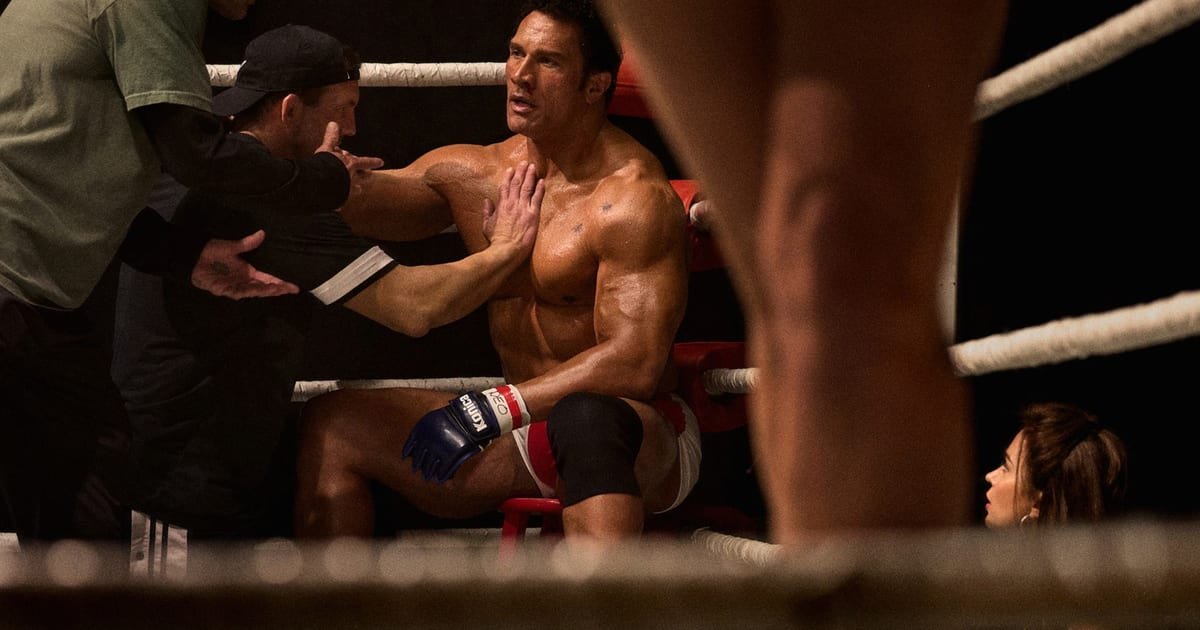
Of course there have been inevitable (and not entirely unfair) jokes about The Rock running for an Oscar since The Smashing Machine was announced, but Safdie and Johnson certainly make a compelling case for it. While even a wig and some prosthetics can’t hide his incredibly recognisable visage, there’s a delicateness and vulnerability Johnson brings to the role as well as obvious physical command that combine into a mesmerising and empathetic character study. He understands Kerr – undoubtedly because he was a part of the wrestling world long before he was an actor – and watching how deftly he delivers this performance, it’s a shame Johnson has languished in middling blockbusters and action movies for the last 20 years when he’s clearly capable of more.
But even beyond the two excellent lead performances and the exceptional supporting turn from real-life MMA fighter Ryan Bader as Kerr’s friend and fellow UFC competitor, Mark Coleman, there’s plenty else working in The Smashing Machine’s favour, which shuns the trappings of traditional sporting biopics obsessed with the concept of sacrificing everything in the name of victory. The early loss that Mark experiences sets his life on a different path: he must reckon with his opioid dependency; his self-destructive career; his relationship and his mental state before he can even think about getting back in the ring.
Safdie works in a different mode to the swollen melodrama of many genre mates – even the greatest among them – and a key influence is John Hyams’ raw and revealing 1997 documentary, which also gives this film its name. Some moments are recreated, such as Kerr earnestly explaining UFC to a lightly baffled woman in a doctor’s waiting room, but much has been condensed, and this is to the film’s benefit as it avoids becoming a by-the-book account of Kerr’s life so far.
Even the decision to shoot all the UFC fights in a more traditional television event style (distant angles, quick cuts, cameras buzzing around like a fly) rather than the evocative and intimate close-ups that have defined masterworks like Raging Bull and even The Wrestler give The Smashing Machine its own signature. The handheld camerawork of previous Safdie films returns, with The Curse cinematographer Maceo Bishop (who also worked in the Uncut Gems camera department) stepping up to the plate, fashioning something that feels chaotic and thrilling but never out of control.
In fact, it’s a film that feels gloriously alive, earnest in its depiction of masculinity that is fragile rather than toxic while still grappling with the question of why anyone would choose to make a living in such a barbaric way. Every punch, every kick and every fall is felt, and while he’s mopping blood from his nose or having his chin stitched back up, the question lingers about the compulsion that drives Kerr; the compulsion that drives all of us to do things that are bad for us in the name of something greater that we might not even be able to articulate. In this sense, The Smashing Machine isn’t about victory or loss, but the why and how you bleed.




